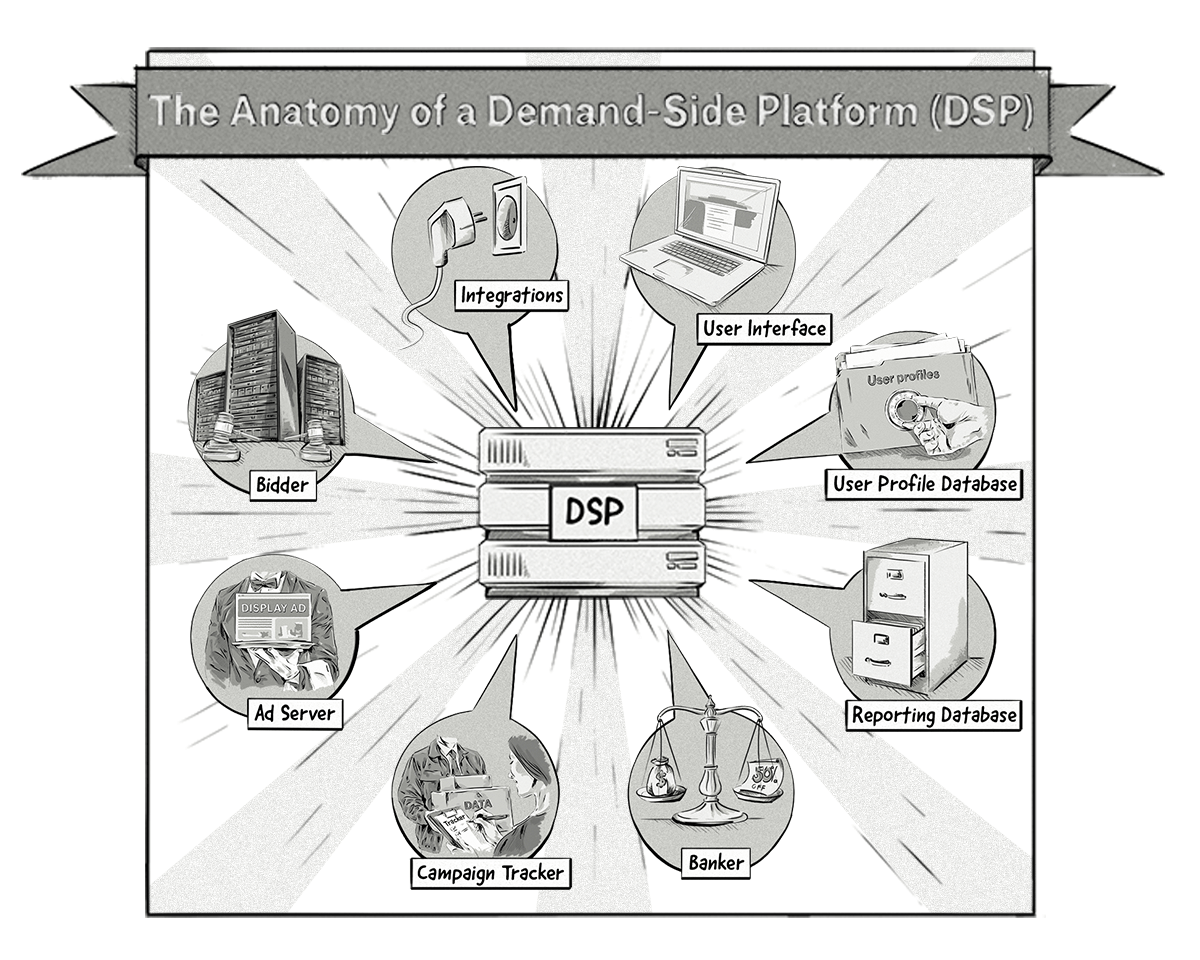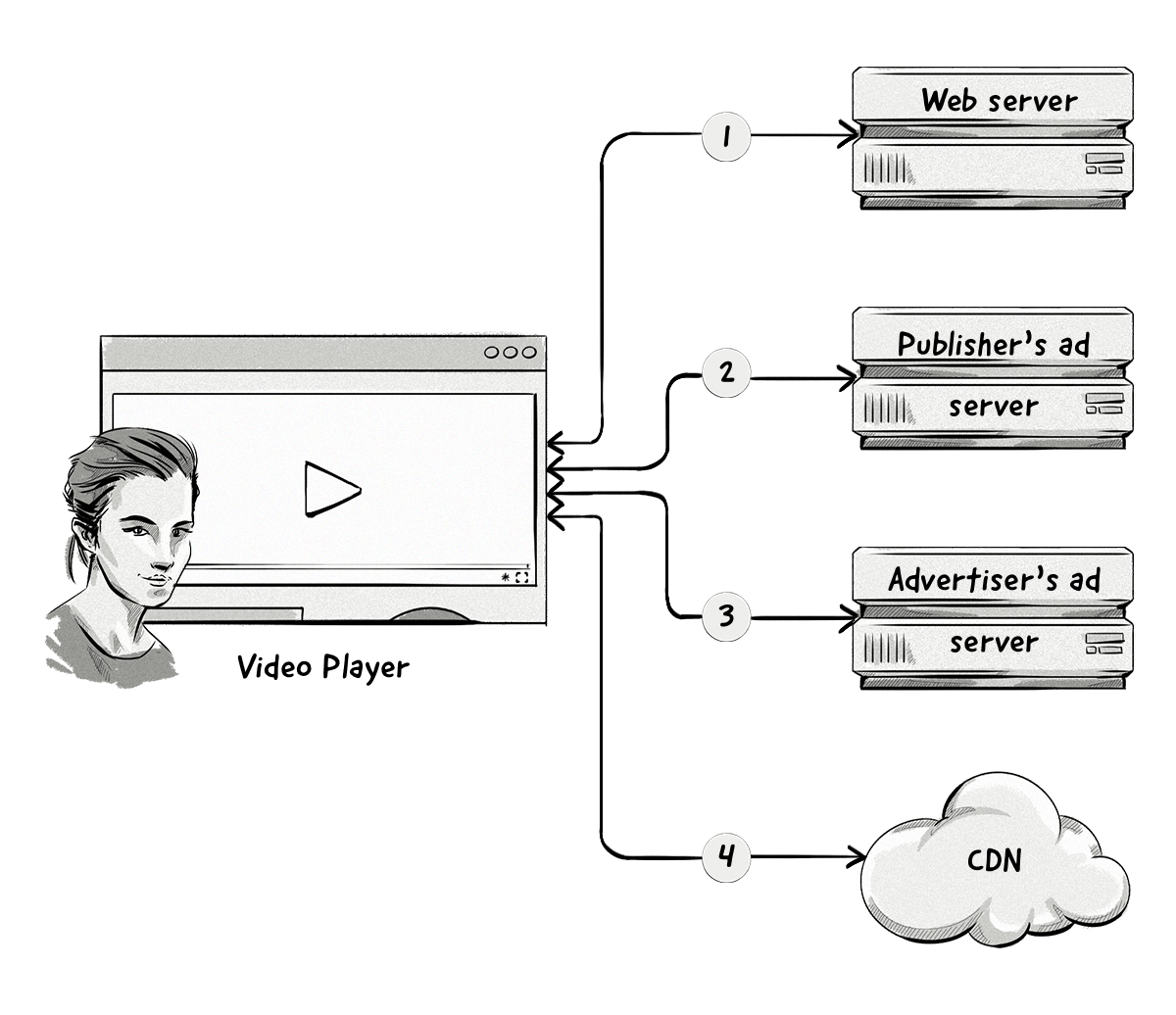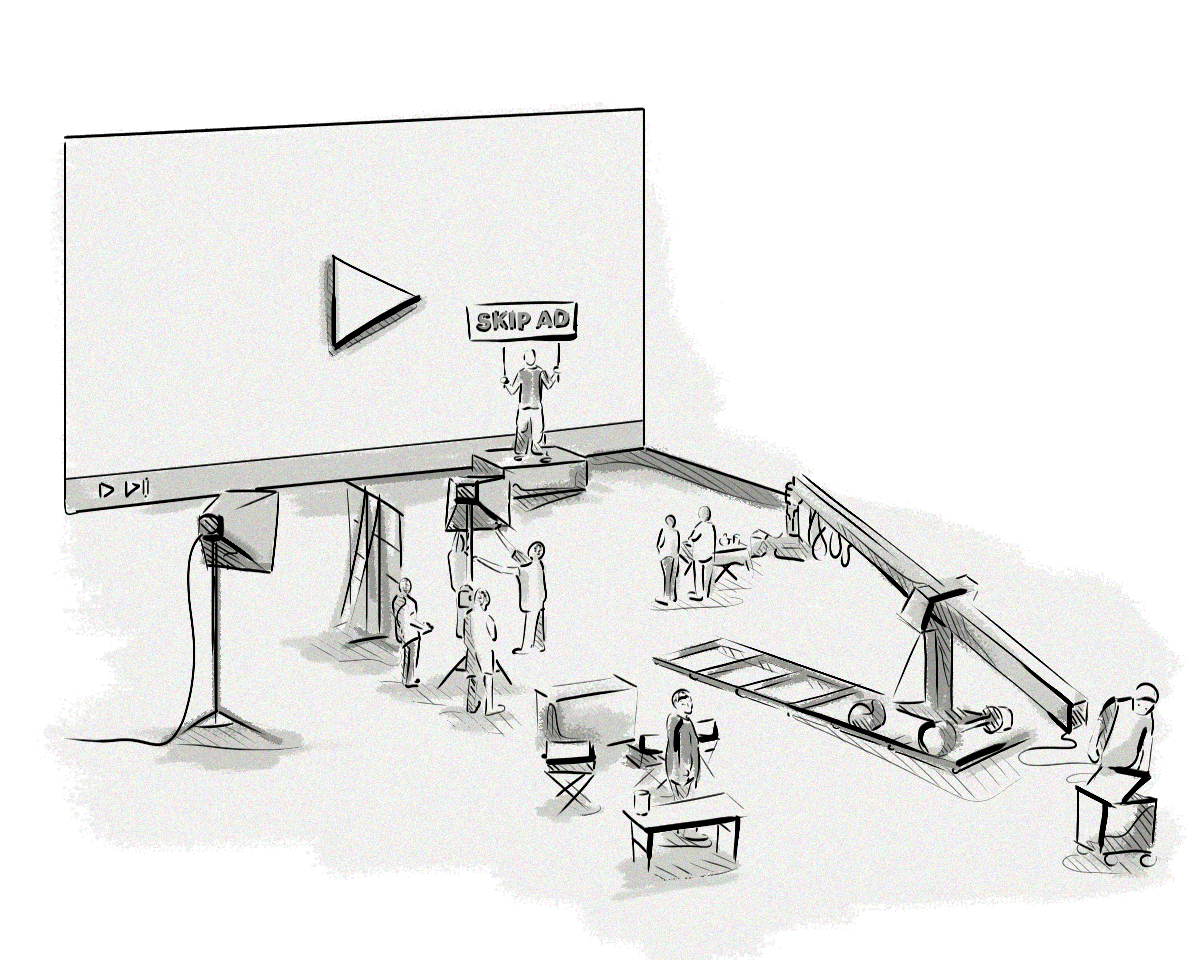As technology evolves and people are presented with many new ways to consume content, video seems to consistently top the charts. This is hardly surprising. Busy, hectic and mobile lifestyles are conducive to formats that allow people to digest information on-the-move in more condensed and accessible ways than blocks of plain text.
The allure of video is undeniable, and thus video ads are well on their way to becoming the dominant driving force of online advertising in the coming years.
The Rise of Video Advertising
According to the IAB Video Advertising Spend Report, digital ad video spend grew from $12.1 billion in 2017 to $14.2 billion in 2018.
This number is expected to increase to $17.8 billion in 2019, an increase of 25% year over year.

Source: IAB’s Video Advertising Spend Report 2019
The report also reveals that nearly two-thirds of video ad revenue comes from mobile devices and nearly 75% of surveyed advertisers are planning to increase their digital video ad spend over the next 12 months.
While most advertisers run video advertising campaigns via walled gardens like Google and Facebook, many businesses are including independent AdTech companies in their video ad strategies.
We Can Help You Build a Connected TV (CTV) Ad Platform
Our AdTech development teams can work with you to design, build, and maintain a custom-built connected TV (CTV) ad platform for any programmatic advertising channel.
What Is Video Advertising?
Video advertising is the process of displaying ads either inside online video content – usually before, during or after a video stream, known as pre-roll, mid-roll and post-roll – or as standalone ads. A majority of video ads are bought, sold and displayed programmatically using various targeting methods and may also include interactive elements.
What Are the Different Video Ad Formats?
The IAB envisions three main video ad formats:
Linear video ads are displayed before, during or after the video content, much like commercials on TV.

Non-linear video ads run concurrently with video content so users see the ad while viewing the content.
Companion ads include text, images or rich media that don’t interrupt video experience.

Where Are Video Ads Shown?
Video ads can be displayed across a number of advertising channels and mediums, including:
- In web browsers on laptops and mobile devices
- In mobile apps (in-app video ads)
- On over-the-top (OTT) devices
What AdTech Platforms Are Involved in Serving Video Ads?
For any given video ad, there could be half a dozen or so AdTech platforms involved in the delivery from an advertisers to a publisher.
Below are the main platforms used to serve video ads.
Video demand-side platforms (DSP): A piece of software used by media buyers (brands, advertisers and agencies) to purchase video inventory from publishers via real-time bidding (RTB) auctions.
These video DSPs work in a very similar way to those used to serve display ads.
The main functions of a video DSP usually include bidding- and campaign-optimization algorithms, behavioral targeting based on third- and first-party data, measurement and attribution, and campaign reporting and analytics.

Video supply-side platforms (SSP): A piece of software used by publishers to aggregate, manage and sell video inventory to media buyers via RTB auctions.
Many video SSPs include analytics and reporting, yield management and optimization, and inventory management.

Video ad servers: An AdTech platform that provides advertisers with centralized storage, tracking and delivery of video ads.
Ad servers also help publishers manage campaign tags from advertisers and make decisions about which video ads to show.
Video ad networks: A piece of software that aggregates advertising space from various publishers and sells it to advertisers. Most ad networks don’t own the media, they just facilitate the buying and selling process between publishers and advertisers. The exceptions here are walled gardens like Facebook (which also owns Instagram) and Google (which owns YouTube, Blogger, etc).
The Video Ad Serving Process
At the core, and from the perspective of advertising technologies involved in the process, video advertising is not much different from display advertising, except for what is displayed on the screen.
Video ad serving can be a complex process depending on the number of AdTech platforms involved, as each will need to send and receive ad and bid requests.
Below is a basic overview of how video ads can be served.
We use the term “video player,” but it is meant as any device capable of displaying video media with ads.

The steps:
- The user visits a site with a video player, which sends a request to the publisher’s web server to retrieve the video content.
The server responds with code that tells the browser where to get the main video content from and how to format it in the player window.
The video player should support HTML5 video and VAST tags for communication with ad servers. - After the video content is fetched, the video player sends a request to the publisher’s ad server to retrieve a video ad (or at least the advertiser’s ad markup). This process requires sending a VAST request. The publisher’s ad server would also count an impression.
The publisher’s ad server programmatically decides which ad to display in the ad space and sends back the chosen ad markup. - The ad markup loads in the video player and sends a request to the advertiser’s ad server to retrieve the video ad.
The advertiser’s ad server counts an impression and sends back a link that directs to the video ad’s location so it can be displayed to the user in the video player. Most of the time, the video ad would be hosted on a content delivery network (CDN). - The video player sends a request to the CDN. The CDN returns the video ad file and the video ad is shown to the user.
There will often be other AdTech platforms involved in the ad serving process, depending on how the video ad space is sold (e.g. via RTB or direct deals).
The Player
As seen in the ad serving process above, the central element of video advertising is the player, which serves as an interface between the video and the user.
In order to display video ads, the player must be able to communicate with ad servers, as well with the page or device.
But most devices like OTT or Advanced TVs don’t necessarily speak the same language.
This is why a common schema is needed to standardize how ads can be served from video ad servers, and then played in video players across a number of websites (publishers) and on numerous devices (e.g. desktop, mobile, connected TV, tablet, etc.).
Enter VAST.
Video Ad Serving Template (VAST)
VAST is a common video ad serving template proposed by the IAB.
After numerous iterations and changes (we’ve written about them in another post on our blog), the IAB recently introduced VAST 4.2.
The new version brings about many important and much overdue solutions for video advertising’s nagging problems and processes, such as measurement, verification and interactivity.
Unfortunately for the whole industry, many video players are lagging behind.
According to the IAB, some manufacturers of devices and developers of advertising technology still use VAST versions 3 and 2.
Why Is the Adoption of VAST 4.2 Important for the Ad Industry?
Just like software updates keep your phone safe from hacking, VAST updates are much needed across the industry to streamline ad delivery processes and curtail ad fraud – the perennial bane of online advertising.
If you’re interested in the various types of ad fraud, head over to another article on the blog where we describe the issue in more detail.
The key benefits of industry-wide adoption of VAST include:
- Faster implementation due to standardized macro-based ad requests, enabling all video players to more efficiently display video ads
- Improved support for mobile and OTT platforms
- Combined audio and video standards, with the inclusion of Digital Audio Ad Serving Template (DAAST)
The introduction of VAST 4.2 also means the final killing-off of VPAID, a format that wasn’t originally met with a good reception and may have been the reason for the slow adoption of a common schema.
VPAID offered limited transparency and created various issues in the industry associated with trust, vulnerabilities, negative user experiences and poor fill rates.
What Does VAST 4.2 Do?
The various video ad protocols known as VAST, VPAID, VMAP and MRAID were once a real dumpster fire, and the fragmentation did not help vendors in getting on board with the standard.
After numerous updates and tweaks introduced by the IAB, VAST has finally matured and now also incorporates OMID and SIMID.
This means it covers both ad delivery and essential video interactivity.
- VAST controls the delivery of video ads. It is used to describe the ad, beacons, and determines the location of various assets of the ad – media files, verification scripts and interactive scripts.
- OMID is used for measurement and viewability, and is supported by Open Measurement SDK for actual implementation.
- SIMID controls interactivity.
How Does a VAST Request Work?
In order to play a video ad, the video player must send a VAST request to an ad server for information about:
- The ad that should be played
- How the ad should be played
- What should be tracked as the ad is played

The VAST request is an HTTP address with a query string like:
http://www.example.com/?LR_PUBLISHER_ID=1331&LR_CAMPAIGN_ID=229&LR_SCHEMA=vast2-vpaidThe VAST inline response contains information like
- Creative type
- Creative ID
- Creative dimensions
- Location of assets
- Tracking URLs
- What happens, for example, when the creative is clicked
Read this post to learn about the difference between VAST wrappers and VAST inline requests/responses.
Once the specified events have occurred, the video player will fire the tracking pixels to track impressions and other metrics.
The sample VAST 4.0 response containing the above parameters would look like this (courtesy of IAB Tech Lab):
<VAST version="4.0" xmlns="http://www.iab.com/VAST">
<Ad id="20011" sequence="1" conditionalAd="false">
<Wrapper followAdditionalWrappers="0" allowMultipleAds="1" fallbackOnNoAd="0">
<AdSystem version="4.0">iabtechlab</AdSystem>
<Error>http://example.com/error</Error>
<Impression id="Impression-ID">http://example.com/track/impression</Impression>
<Creatives>
<Creative id="5480" sequence="1" adId="2447226">
<CompanionAds>
<Companion id="1232" width="100" height="150" assetWidth="250" assetHeight="200" expandedWidth="350" expandedHeight="250" apiFramework="VPAID" adSlotID="3214" pxratio="1400">
<StaticResource creativeType="image/png">
<![CDATA[https://www.iab.com/wp-content/uploads/2014/09/iab-tech-lab-6-644x290.png]]>
</StaticResource>
<CompanionClickThrough>
<![CDATA[https://iabtechlab.com]]>
</CompanionClickThrough>
</Companion>
</CompanionAds>
</Creative>
</Creatives>
<VASTAdTagURI>
<![CDATA[https://raw.githubusercontent.com/InteractiveAdvertisingBureau/VAST_Samples/master/VAST%204.0%20Samples/Inline_Companion_Tag-test.xml]]>
</VASTAdTagURI>
</Wrapper>
</Ad>
</VAST>We Can Help You Build a Connected TV (CTV) Ad Platform
Our AdTech development teams can work with you to design, build, and maintain a custom-built connected TV (CTV) ad platform for any programmatic advertising channel.








